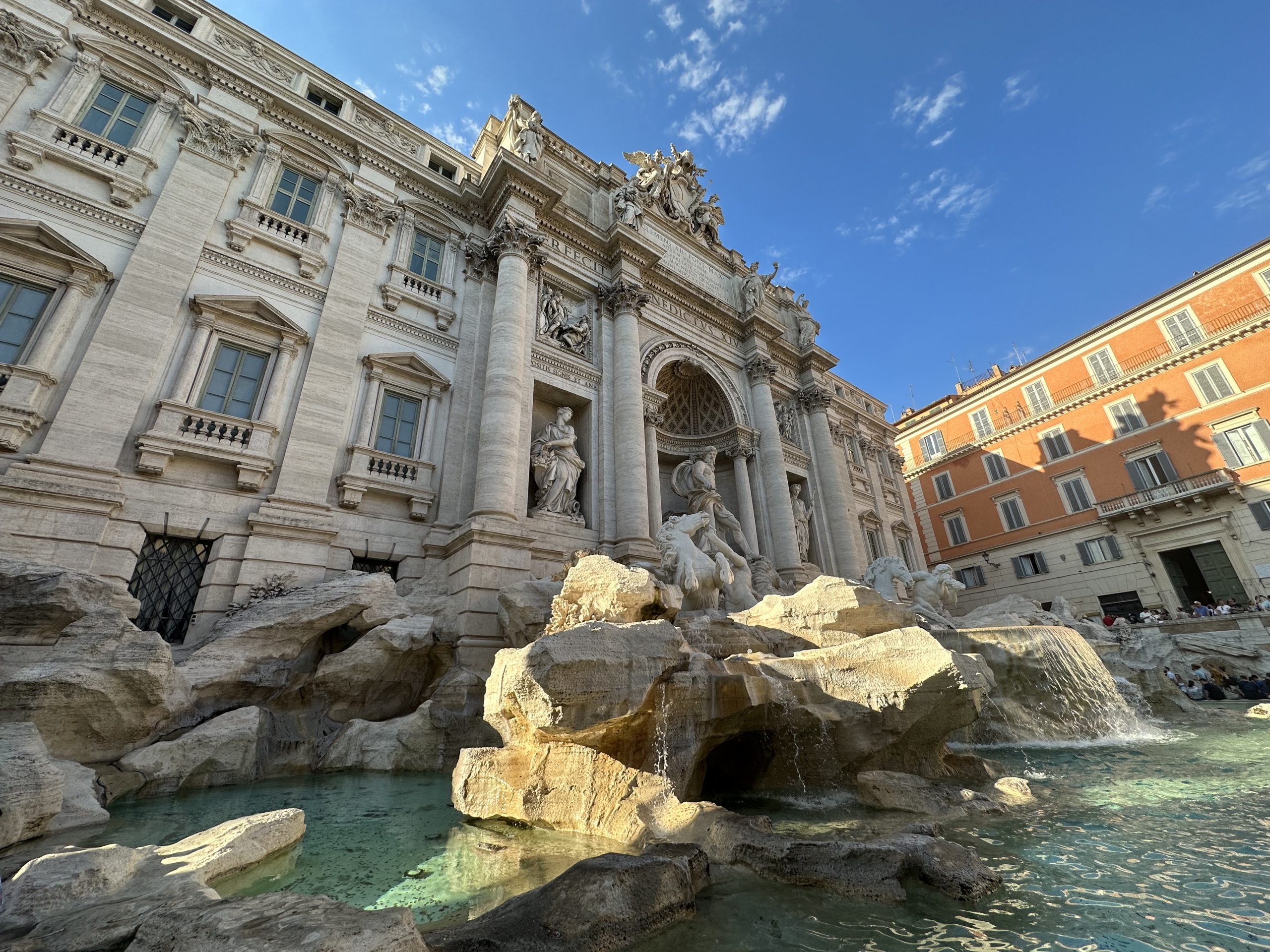
Welcome to the Eternal City – Rome, a city steeped in history, art, and culture. As you wander through the cobblestone streets, you’ll be immersed in the grandeur of ancient ruins, breathtaking fountains, and awe-inspiring architecture. In this blog post, we’ll embark on a captivating journey to two iconic landmarks in Rome – the Trevi Fountain and the Colosseum – which serve as testaments to the city’s timeless beauty and significance.
The Trevi Fountain: A Mesmerizing Masterpiece:
Located in the heart of Rome, the Trevi Fountain stands as a striking example of Baroque architecture and is an integral part of the city’s rich heritage. Designed by Nicola Salvi and completed in 1762, the fountain’s grandeur is unparalleled, standing approximately 85 feet tall and 161 feet wide. Its central figure, Neptune, the Roman god of the sea, commands attention as he rides a chariot pulled by two magnificent sea horses – one tame and one unruly – symbolizing the contrasting nature of the sea.
The Trevi Fountain’s legend revolves around the tradition of tossing a coin over one’s left shoulder with the right hand into the water. By doing so, you ensure a return to Rome someday. Thousands of visitors partake in this ritual every day, creating a mesmerizing spectacle and contributing to a charitable cause. Each night, nearly €3,000 worth of coins are collected from the fountain and donated to help those in need.
Visiting the Trevi Fountain at different times of the day offers unique experiences. During the daytime, the sunlight beautifully illuminates the sculptures, while at night, the fountain transforms into an enchanting oasis with soft lights dancing on the water’s surface.
The Colosseum: Reliving Gladiatorial Spectacles:
Moving on from the Trevi Fountain, we venture into the ancient heart of Rome to witness the Colosseum, an extraordinary amphitheater that evokes a profound sense of history and power. Erected between 70-80 AD, this massive structure once hosted intense gladiatorial contests and other public spectacles, captivating thousands of spectators.
The Colosseum’s grandeur lies not just in its sheer size – towering over 150 feet with a capacity to hold up to 80,000 people – but also in its remarkable architecture. Its ingenious engineering and innovative techniques allowed for quick assembly, a testament to Roman engineering prowess.
While exploring the Colosseum, you can’t help but imagine the epic battles and spectacles that once unfolded within its walls. The amphitheater’s underground tunnels, known as the hypogeum, were used to house animals and gladiators, adding to the thrilling atmosphere of the games.
Preserving Rome’s Timeless Heritage:
Both the Trevi Fountain and the Colosseum are vital components of Rome’s cultural heritage, and significant efforts have been made to preserve and restore these iconic landmarks over the years. The Italian government, alongside various organizations, consistently invests in the upkeep and maintenance of these historical treasures to ensure they stand the test of time and continue to inspire awe for generations to come.
